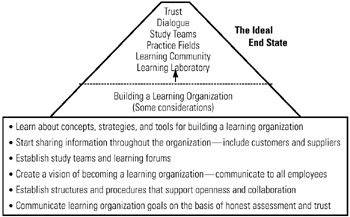Tool 176: Scenario Writing
| AKA | Scenario Construction |
| Classification | Changing/Implementing (CI) |
Tool description
The scenario writing technique is a process of forecasting some future state by examining the details and interactions of different events of change. As in gap analysis, the process starts with the status quo and moves to a desirable end state, identifying the required actions to get there.
Typical application
-
To forecast and write a description of a future state.
-
To hypothesize how continuous change will affect future events.
-
To imagine the actual conditions that will exist at some future date.
Problem-solving phase
| Select and define problem or opportunity | |
| → | Identify and analyze causes or potential change |
| → | Develop and plan possible solutions or change |
| Implement and evaluate solution or change | |
| Measure and report solution or change results | |
| Recognize and reward team efforts |
Typically used by
| Research/statistics | |
| 1 | Creativity/innovation |
| Engineering | |
| Project management | |
| Manufacturing | |
| 2 | Marketing/sales |
| Administration/documentation | |
| Servicing/support | |
| Customer/quality metrics | |
| 3 | Change management |
before
-
Gap Analysis
-
Case Study
-
Force Field Analysis
-
Mental Imaging
-
Trend Analysis
after
-
Opportunity Analysis
-
Cost-Benefit Analysis
-
Consensus Decision Making
-
Countermeasures Matrix
-
Variance Analysis
Step-by-step procedure
-
STEP 1 A team decides to construct a scenario for the present organization, such as a description of the organization in the year 2002. See example Futuring the Learning Organization.
-
STEP 2 Participant discuss probable events and changes leading up to the future state of the organization.
-
STEP 3 To more accurately forecast a realistic picture of the future organization, a list of specific considerations is developed, as shown in this example.
-
STEP 4 Lastly, the desired end state is summarized. This written scenario of the future organization could be very useful in the visioning and planning process.
Example of tool application
Futuring the Learning Organization

EAN: 2147483647
Pages: 326